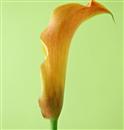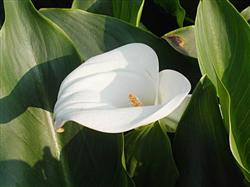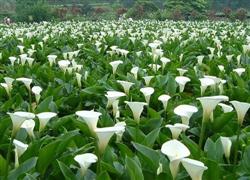Control methods of leaf spot of Zantedeschia mandshurica

First, symptoms infected leaves produce light brown to yellowish brown spots, mostly round, oval or irregular. A few diseases have inconspicuous wheel lines. In the later stage of the development of the disease, many black dot-like molds were produced in the center of the disease spot, that is, the conidia of the pathogen. 2. Pathogen and incidence status of Zantedeschia leaf spot is a fungal disease caused by Alternaria alternata infection. The pathogen overwintered in the diseased leaf stump of calla and spread by airflow. In summer, when the temperature and humidity are high in the shade shed, the disease spreads very fast, and the damage is the most serious from July to October every year. However, the disease can occur in the greenhouse for many years, and the diseased plants that enter the house in winter can continue to develop and spread when the temperature in the greenhouse is 18 mi 20 degrees Celsius, and these diseased plants will become the source of infection of healthy plants. In the case of poor ventilation and poor maintenance conditions, the disease is common. Third, prevention and control methods 1. Strengthen cultivation management. The growing season should be based on the habits of calla lilies and put them under the shade to make them grow strong and reduce the incidence of disease. If exposed directly to the sun, it will weaken the growth of the plant and be conducive to the disease. Calla lilies should also be placed in the north in the greenhouse in winter. Reasonable fertilization can promote plant growth and improve disease resistance. 2. Eliminate the source of infection in time. During the growing period, the diseased and residual leaves were removed in time. Before entering the house in winter, thoroughly remove the remains of diseased leaves and concentrate on treatment to keep the soil surface clean and reduce the source of infection. 3. Chemical control: in flower beds where the disease is common and serious, 50% carbendazim wettable powder 800 Mel 1000 times liquid spray can be used at the initial stage of the disease, once every 15 days, generally 3 times continuously.
- Prev

Key points of horseshoe cultivation techniques
1. Variety selection should be made from high-yield and disease-free horseshoe fields, with complete appearance, disease-free wounds, full corms and strong bud heads as seeds, with a size of less than 30 per jin and 120 tons and 150 jin per mu. Second, soak the seeds for 10 hours with 800 times before raising seedlings to prevent stem blight and seedlings.
- Next

Mosaic disease of calla lilies
The common diseases of calla lilies are: ① soft rot. During the growing period, the soft rot detached from the plant near the surface, and caused the leaf edge to soften, wet rot to wither, flower color to brown, pedicel soft rot to fall off, and downward to cause sticky soft rot of tuber, root rot, and even wilting and death of the plant. Prevention and control measures: a.
Related
- Fuxing push coffee new agricultural production and marketing class: lack of small-scale processing plants
- Jujube rice field leisure farm deep ploughing Yilan for five years to create a space for organic food and play
- Nongyu Farm-A trial of organic papaya for brave women with advanced technology
- Four points for attention in the prevention and control of diseases and insect pests of edible fungi
- How to add nutrient solution to Edible Fungi
- Is there any good way to control edible fungus mites?
- Open Inoculation Technology of Edible Fungi
- Is there any clever way to use fertilizer for edible fungus in winter?
- What agents are used to kill the pathogens of edible fungi in the mushroom shed?
- Rapid drying of Edible Fungi

